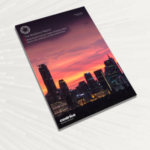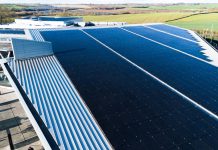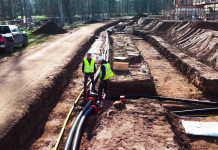 There’s usually a strong commercial case for investing in energy resilience, says Centrica Business Solutions. But how do you convince your Board to make it a priority?
There’s usually a strong commercial case for investing in energy resilience, says Centrica Business Solutions. But how do you convince your Board to make it a priority?
Centrica recommends a three-phase process to pinpoint a site’s energy resiliency issues and start building a commercial case.
- Gather granular-level Insights
Usage – How much power are you consuming and when (at both a site and equipment level)? You may be surprised by the pattern you discover and energy saving opportunities your identify.
Supply – How is your energy supplied and from where? What’s the split between grid supplies and on-site generation or backup power?
Failures – Which equipment and processes require an uninterrupted supply? What energy-related failures have occurred previously and what was the impact? Where should you focus?
- Scope out solutions
Use the data and insights you gathered in the first phase to inform investment in the most appropriate technologies:
Energy analytics software – Metering and BEMS data will only take you so far. Using equipment-level energy sensors can identify problems in real-time, enabling you to optimise efficiency and fix a problem before it has a more serious system-wide impact.
On-site generation – Does your energy profile make on-site generation, such as Combined Heat and Power (CHP), viable? If you already generate your own power, are you making full use of these assets, e.g. by optimising efficiency, operating independently of the grid, or participating in lucrative demand side response (DSR) schemes?
Battery storage – The use of battery storage technologies, which can provide energy in less than a second, can help maintain reliable supply, reduce wastage, save money and earn revenue via DSR participation.
- Work out the return on investment
Quantify risk – Use the insights gathered in the first phase to assess the size and nature of the risk your want to mitigate against. One of the key metrics of energy failure is unplanned downtime. Working out the average cost per hour can be a useful starting point.
Effective equipment management and maintenance – Equipment level monitoring combined with proactive maintenance strategies can pay dividends in reducing downtime due to performance issues and be more cost effective than repairing equipment at the point of breakdown.
Energy efficiency benefits – Energy resiliency technologies also contribute to energy efficiency, e.g. CHP will save energy and can be enabled to run during periods of grid outage. Energy demand reduction can also pay off by reducing the stress on the grid, thereby alleviating the risk of energy failure. Demand reduction will also increase the effectiveness of resilience equipment, such as batteries and CHP.
Carbon reduction – Technologies such as CHP and battery storage can achieve significant carbon savings, helping to reduce the cost of environmental compliance and improve the business case for energy resilience.
Take the next steps in de-risking your business from energy-related failure. Download The Resiliency Report.
Related stories:
Centrica: Firms urgently need a resilience strategy
Centrica: How to manage the risk of business energy disruption
Follow us at @EnergystMedia. For regular bulletins, sign up for the free newsletter.



